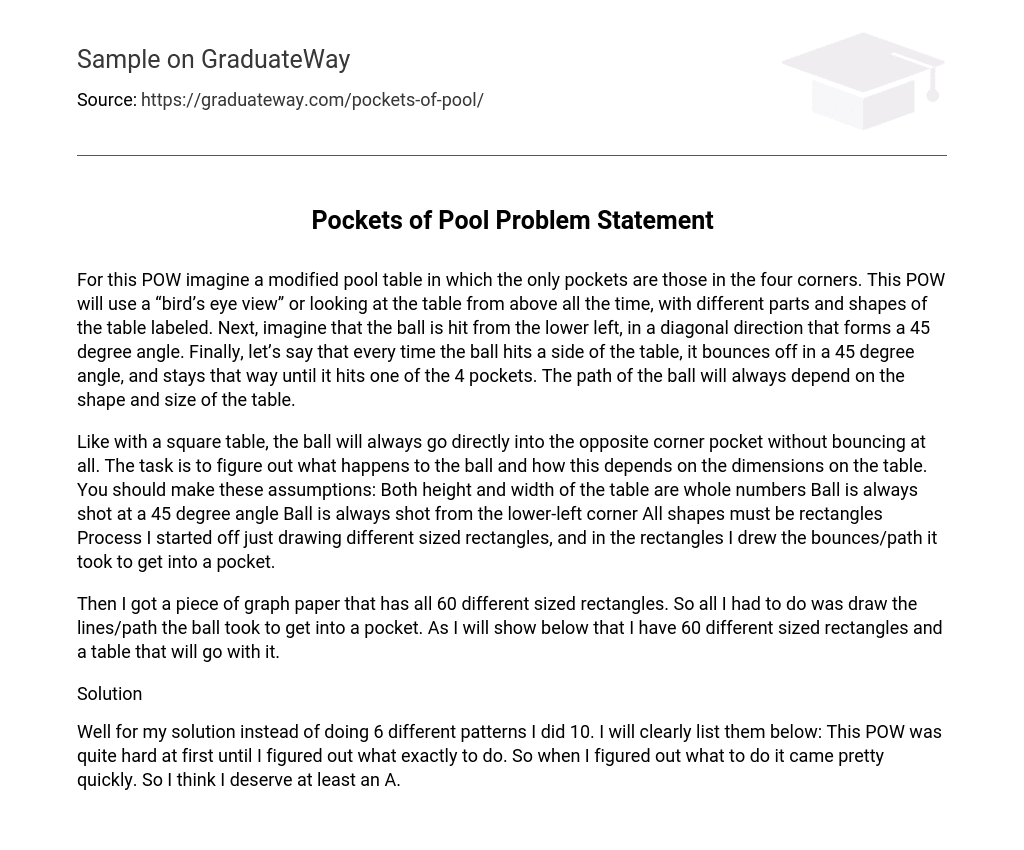Picture a pool table with modified pockets positioned solely at the corners. The viewpoint of the table is from above, resembling an aerial perspective, and different components and forms are designated. Envision the ball being struck diagonally at a 45-degree angle from the lower left corner. Furthermore, presume that when the ball collides with one of the table’s edges, it bounces back at a 45-degree angle and persists in its course until reaching one of the four pockets. The dimensions and configuration of the table will consistently affect the trajectory taken by the ball.
The behavior of the ball is affected by the size and shape of the table. If the table is square, the ball will go straight into the corner pocket without bouncing. Our goal is to comprehend how the ball behaves with various table dimensions. To achieve this, we have certain assumptions: both height and width are integers, and the ball is consistently shot at a 45-degree angle from the lower-left corner. We must take into account all rectangular shapes. To explore further, I began creating rectangles of different sizes and observing how the ball bounces in order to reach a pocket.
I obtained a piece of graph paper containing 60 rectangles of various sizes. This allowed me to easily plot the path the ball took to reach a pocket. I will demonstrate this with the following display, which includes both the rectangles and a corresponding table.
Solution
Instead of creating 6 patterns, I created 10 for my solution. Here is a clear listing of them: This POW was initially challenging but became much easier once I understood the exact steps to take. Therefore, I believe I should receive at least an A.





